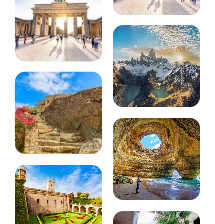
Visiting Aigues-Mortes: 8 must-dos

Nestling in the heart of the Camargue Gardoise, Aigues-Mortes stands like a perfectly preserved medieval jewel. This fortified town, founded by Saint Louis in the 13th century, instantly transports you back to the time of the Crusades, with its imposing ramparts encircling the town for more than 1.6 kilometres. With its exceptional historical heritage and breathtaking Camargue landscapes, visiting Aigues-Mortes promises a memorable getaway where history, culture and nature come together. From the rose-tinted salt marshes to the cobbled streets of the historic centre, every corner of this unique town tells a fascinating story.
Download the audio tour to discover the Camargue on foot and on your own
To explore Aigues-Mortes and the Camargue region in an immersive and rewarding way, opt for the Navaway audio tour dedicated to the Camargue. This self-guided tour lets you discover the treasures of Aigues-Mortes and the surrounding area at your own pace, with captivating audio commentary that brings each monument, alleyway and panorama to life. Navaway accompanies you as you discover the exceptional heritage of this medieval city and its surrounding natural wonders.

See also the Camargue guide :
- Visiting the Camargue: 12 must-sees and must-dos
- Visiting Saintes-Maries-de-la-Mer: 15 must-sees
- The 18 must-sees to discover Occitania
- 20 must-see weekend ideas around Montpellier
- France’s most beautiful national and nature parks
- Unusual accommodation in the Gard: 12 original places to stay
1. Explore the medieval ramparts of Aigues-Mortes
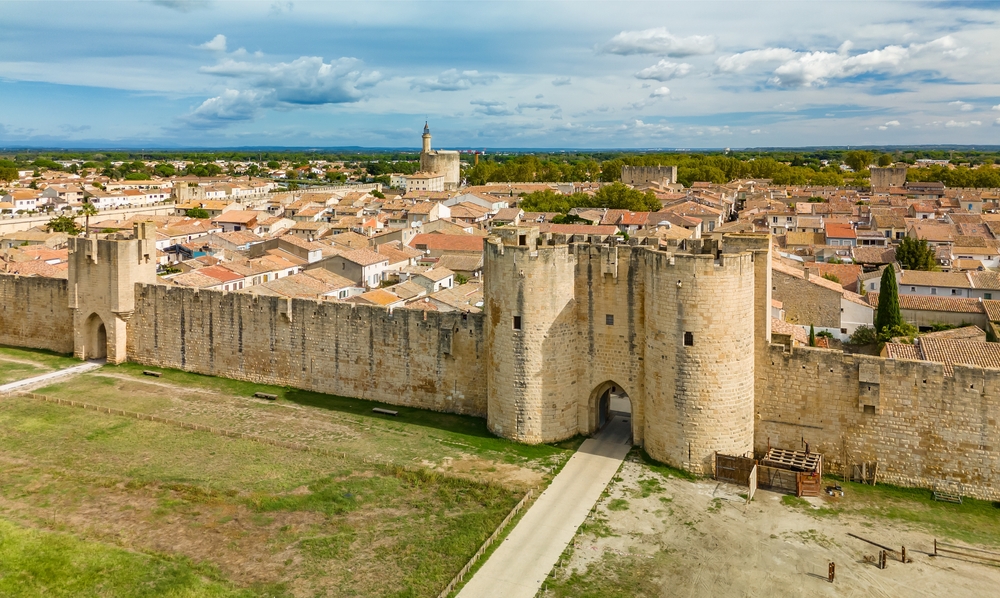
The ramparts of Aigues-Mortes are the town’s star attraction and offer an unforgettable experience. Built in the 13th century under the reign of Saint Louis, these exceptionally well-preserved fortifications stretch for 1,640 metres and include no fewer than twenty defensive towers. A walk along the ramparts literally takes you back to the Middle Ages, with spectacular views of the surrounding Camargue at every step.
From the top of these ramparts, you’ll have an uninterrupted view of the rosy-coloured salt marshes that stretch as far as the eye can see to the south of the town. On a clear day, the Mediterranean sparkles on the horizon. Access to the ramparts is from the Tour de Constance, and there are several different ways to visit: self-guided tour with audio guide, guided tour with commentary, or themed tours organised on a regular basis. Allow around an hour and a half to complete the tour, taking your time to admire the scenery and soak up the unique atmosphere of this listed historic monument.
A visit to the Tours et Remparts d’Aigues-Mortes (Place Anatole France, 30220 Aigues-Mortes, rated 4.5/5 on Google out of 2,900 reviews) is a great way to understand the ingenuity of medieval defence.
2. Discover the Constance Tower, a witness to history
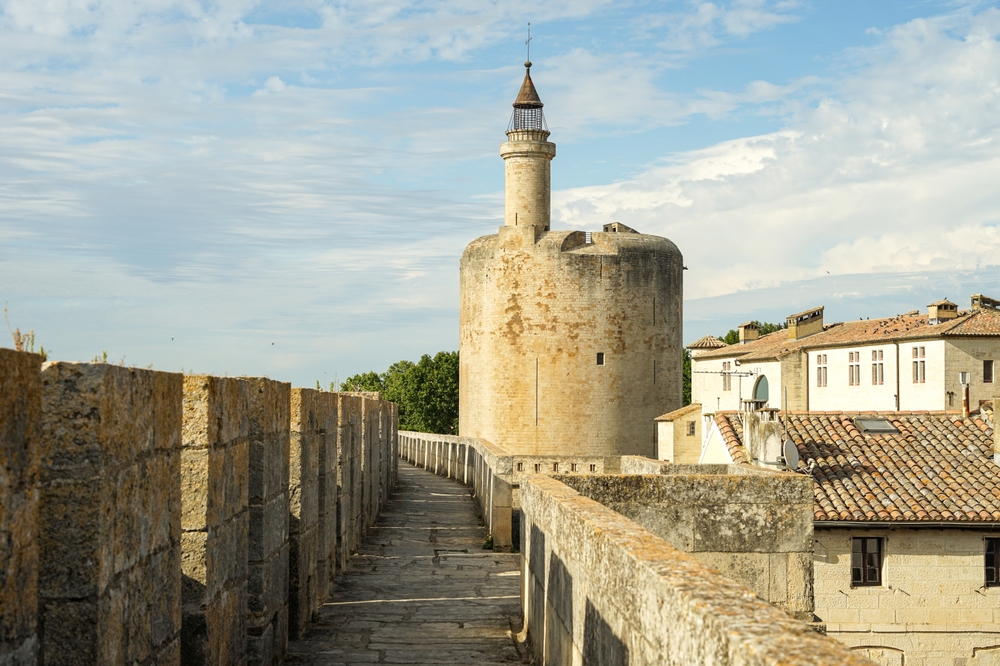
The Tour de Constance majestically dominates the north-western corner of the ramparts of Aigues-Mortes. This impressive cylindrical structure, 22 metres in diameter and 40 metres high, was used successively as a royal keep, a lighthouse and a prison. It was precisely its role as a prison that left its mark on French history: many Protestants were imprisoned here after the revocation of the Edict of Nantes in 1685.
The most poignant story is that of Marie Durand, imprisoned for 38 years in this tower for her Protestant faith. On the walls of the guards’ room, you can still see the word “resist” engraved in stone, a moving testimony to the determination of the Huguenot prisoners. The tour of the tower takes you through several vaulted rooms before reaching the summit terrace, which offers an absolutely breathtaking 360-degree panorama of the fortified town, the Camargue and the surrounding lakes.
Be sure to explore every level of this iconic tower when you visit. The permanent exhibitions trace the fascinating history of this monument, which symbolises both royal power and religious resistance.
3. Stroll around Place Saint-Louis, the historic heart of the city
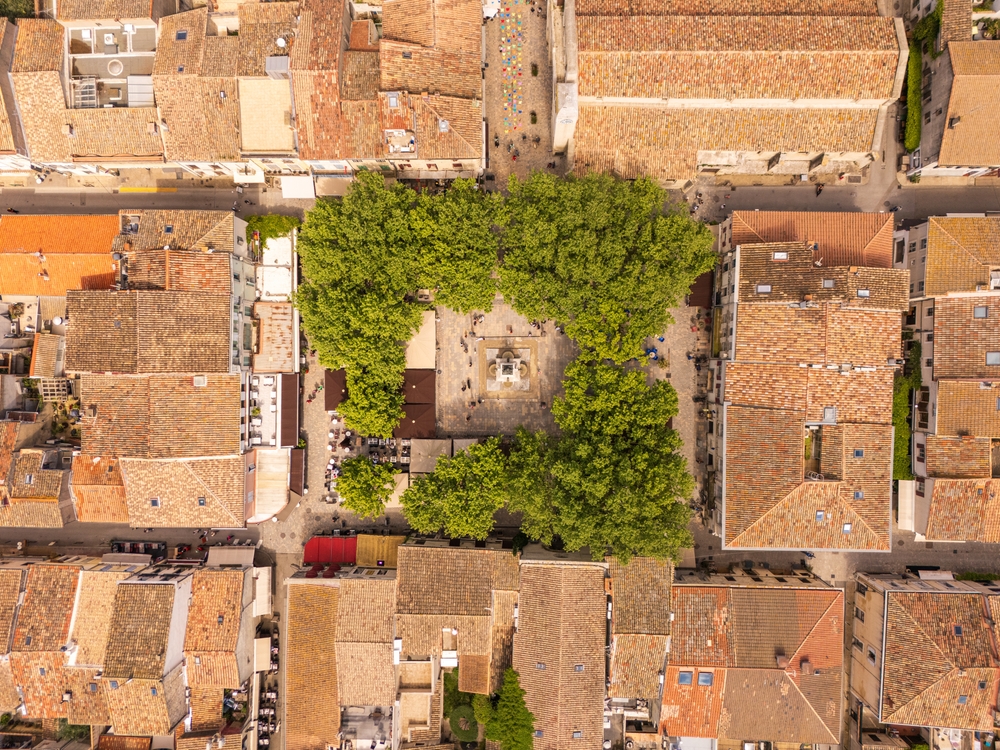
The Place Saint-Louis has been the beating heart of Aigues-Mortes since its foundation. This elegant esplanade owes its name to King Louis IX, known as Saint Louis, who founded the town in 1240. Surrounded by typically colourful Mediterranean facades, welcoming terraces and craft shops, it is the perfect embodiment of the art of living in the South of France.
In the centre of the square stands proudly the equestrian statue of Saint Louis, the work of sculptor James Pradier, inaugurated in 1849. This monument pays tribute to the Crusader king who made Aigues-Mortes the port of embarkation for his two crusades to the Holy Land. Around the square, you will discover several remarkable buildings, including the chapel of the Pénitents Blancs (White Penitents) and the chapel of the Pénitents Gris (Grey Penitents), witness to the intense religious life that animated the town.
This square is also home to the Aigues-Mortes Tourist Office (Place Saint-Louis, 30220 Aigues-Mortes, rated 4.2/5 on Google for around 150 reviews), the ideal starting point for organising your day’s visit. The many cafés and restaurants set up under the arcades invite you to take a pleasant break while watching the ballet of visitors. Place Saint-Louis is particularly lively in the early evening, when the golden light of sunset sublimates the ochre facades and the terraces fill up with tourists and locals who have come to enjoy the mild Mediterranean climate.
4. Admire the church of Notre-Dame-des-Sablons

The church of Notre-Dame-des-Sablons is a must-see when visiting Aigues-Mortes. Built in the 13th century at the instigation of Saint Louis to accompany the founding of the town, this church has survived the centuries and experienced an eventful history. Its southern Gothic architecture, characterised by Cistercian sobriety, contrasts with the usual splendour of churches of the period.
The building takes its name from the quicksand on which it was built, a remarkable architectural challenge for its time. Over the centuries, the church suffered a great deal of damage: looted by Protestants in 1575, it lost its bell tower, which collapsed in 1634, and was converted into a salt warehouse during the French Revolution. It wasn’t until the 19th century that it was once again used as a church, before being completely restored in the 1960s.
Inside, don’t miss the magnificent contemporary stained glass windows created in 1991 by artists Claude Viallat and Bernard Dhonneur. These modern creations add a touch of colour and light that enhances the austerity of the stone walls. The church is also home to several works of religious art and a remarkable organ. Located in the centre of the town, right next to the Place Saint-Louis, the Église Notre-Dame-des-Sablons (Rue Jean Jaurès, 30220 Aigues-Mortes, rated 4.4/5 on Google for around 120 reviews) is well worth a visit, whether you’re a believer or simply a lover of architecture and history.
5. Explore the Aigues-Mortes salt marshes and their pink lagoons

The Aigues-Mortes salt marshes are an absolutely fascinating natural spectacle and one of the most memorable experiences of your stay. These vast expanses of water, varying in hue from candy pink to deep red, stretch over more than 10,000 hectares on the outskirts of the medieval town. This extraordinary colouring comes from a micro-algae, Dunaliella salina, which thrives in very salty water and produces beta-carotene to protect itself from the sun.
There are several options for discovering this unique site. The small tourist train is the most classic family option, taking you to the heart of the salt works with informative commentaries on salt production and local biodiversity. The more sporty can opt for a bike ride along the tracks that criss-cross the salt marshes, while thrill-seekers can opt for a 4×4 safari. Whichever option you choose, you’ll be amazed by the surreal landscapes of the camelles (mountains of white salt several metres high) and the wealth of birdlife on the site.
The salt marshes are home to more than 200 species of birds, including the famous pink flamingo, which has made its home in these shallow, food-rich waters. Spring and summer offer the best conditions for observing these elegant wading birds in their thousands. The Salins d’Aigues-Mortes site (Route du Grau-du-Roi, 30220 Aigues-Mortes, rated 4.1/5 on Google for over 4,500 reviews) also has a museum dedicated to salt, where you can learn all about the thousand-year-old history of this exploitation and the profession of salt worker.
6. Visit the chapels of the Pénitents Gris and Pénitents Blancs
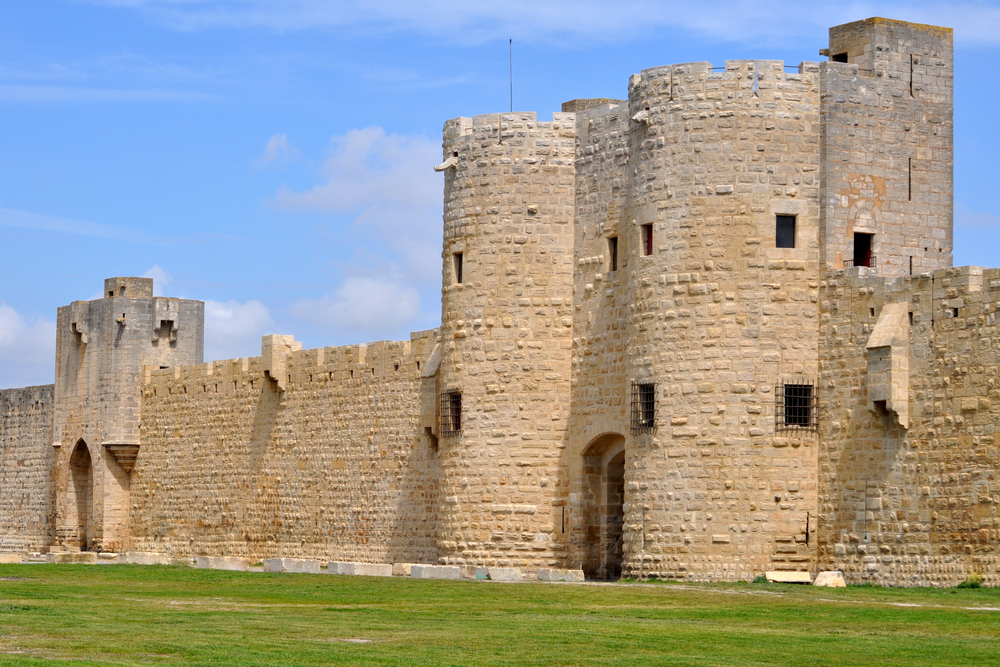
Aigues-Mortes is home to two remarkable chapels that bear witness to the religious fervour that animated the town in the 16th and 17th centuries. The chapel of the Pénitents Gris, built in the 14th century on the foundations of a former convent, is one of the oldest religious buildings in the Gard. This brotherhood of lay people was dedicated to works of charity and to the spiritual guidance of the faithful. The building, which has been restored many times since it was destroyed in the Wars of Religion, retains some precious architectural features, including a baroque altarpiece by Jean Sabatier.
The chapel of the Pénitents Blancs (White Penitents) has a more sumptuous character. Built in 1668 following a split within the Pénitents Gris brotherhood, it boasts a distinctly Baroque style with its richly ornate decorations. The interior contains an exceptional artistic treasure: a large painting by Xavier Sigalon depicting Pentecost, which can be seen behind the main altar. This monumental work perfectly illustrates the talent of this 19th-century artist from the region.
The two chapels narrowly escaped revolutionary vandalism and were transformed into civil buildings before returning to their religious vocation in the 19th century. Today, they regularly host temporary exhibitions and concerts, perpetuating their role as lively cultural venues. The Chapelle des Pénitents Gris (Rue de la République, 30220 Aigues-Mortes) and the Chapelle des Pénitents Blancs (Place Saint-Louis, 30220 Aigues-Mortes, rated 4.5/5 on Google for around 80 reviews) can usually be visited as part of guided tours organised by the Tourist Office, an excellent way to understand the city’s complex religious history.
7. Sample the culinary specialities of Aigues-Mortes
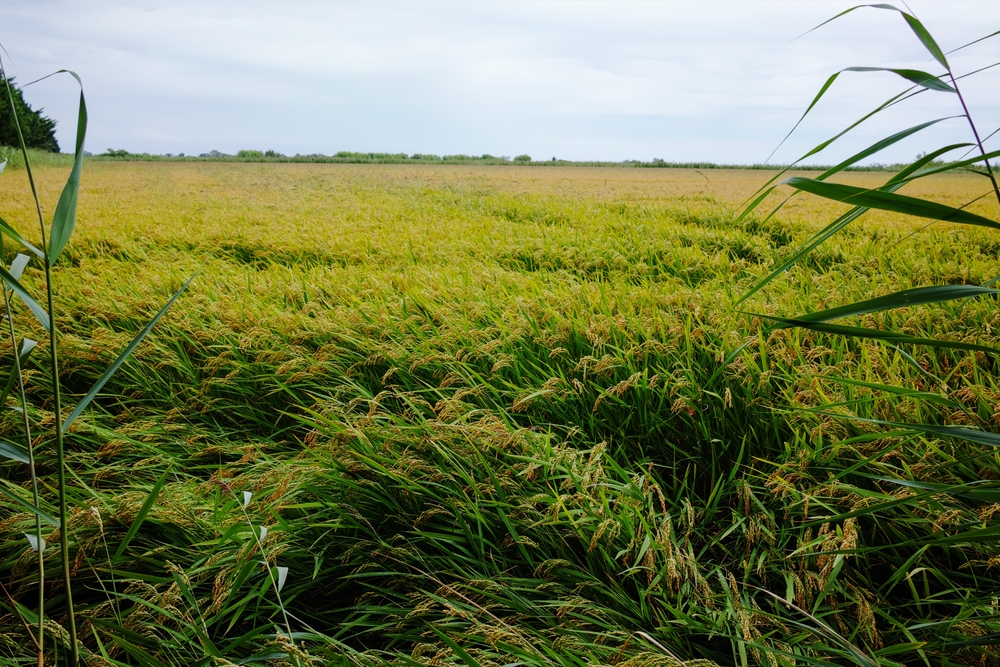
A visit to Aigues-Mortes would not be complete without a gastronomic discovery of its regional specialities. The town boasts an exceptional terroir, between the Camargue and the Mediterranean, offering some unique products. The undisputed star of the local table is the fougasse d’Aigues-Mortes, a soft, golden brioche delicately flavoured with orange blossom. This traditional sweet can be eaten for breakfast or as an afternoon snack, and a number of traditional bakeries continue to produce the traditional recipe.
Camargue rice, grown in the surrounding rice fields since the Middle Ages, accompanies many local dishes. Be sure to try the gardiane de taureau, a stew simmered for a long time with Camargue bull meat, black olives and red wine, traditionally served with rice. Meat lovers will also love the sausages and terrines made from bull meat, which is both tasty and healthy.
The salt of Aigues-Mortes, harvested in the neighbouring salt marshes, deserves a special mention. This traditional sea salt, rich in magnesium and trace elements, comes in several varieties: fleur de sel, grey salt, pink salt… Specialist shops also sell salts flavoured with Provençal herbs or Espelette chilli pepper, perfect as a gourmet souvenir. As for the wines, the vineyards of the Sables de Camargue produce IGP wines of character, in particular the unique rosés gris de gris, grown on the sand. Numerous restaurants lining the Place Saint-Louis or tucked away in the medieval streets will allow you to savour these delights while enjoying the unique atmosphere of the walled city.
8. Cruise the canals of the Camargue
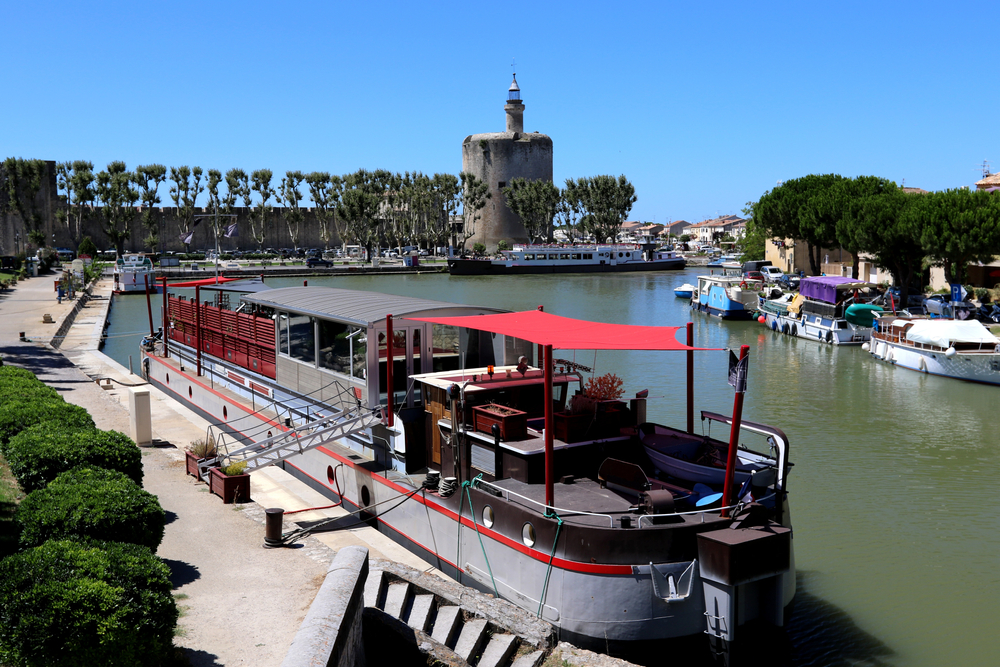
To round off your discovery of Aigues-Mortes in style, a cruise on the canals of the Camargue is a must. Departing from the Aigues-Mortes marina, a number of companies offer boat trips that take you through the wild, unspoilt landscapes of the Petite Camargue gardoise. These river trips, which generally last two hours, offer a unique view of the region and allow you to get up close to the local wildlife in its natural habitat.
Along the way, you’ll cruise between ponds, marshes and reed beds, spotting grey herons, egrets, pink flamingos and maybe even European beavers if you’re lucky. Most tours include a stop at a traditional manade, where you can see the Camargue bulls in semi-liberty and the white horses that are emblematic of the region. Enthusiastic guides share their knowledge of the Camargue’s fragile ecosystem, bullfighting traditions and the fascinating history of these amphibious lands shaped by man since ancient times.
If you’re looking for more independence, a number of rental companies offer boats without a licence, allowing you to explore the canals at your own pace. This option is particularly popular with families and groups of friends looking for a more personal adventure. Sunset cruises offer magical moments, when the low-angled light sets the landscape ablaze in gold and purple. Several companies operate from the Aigues-Mortes Marina (Quai des Croisades, 30220 Aigues-Mortes), and departures are frequent from March to October. Remember to book in high season, especially during the summer months. In conclusion, Aigues-Mortes is an exceptional destination that harmoniously combines historical heritage and natural wonders. With its perfectly preserved medieval ramparts, its Tower of Constance steeped in history, its unbelievably colourful salt marshes and its delicious culinary traditions, the city offers a rich and varied range of experiences. Every alleyway and every monument tells the story of a piece of French history, while the surrounding Camargue landscapes invite you to contemplate and discover the wilderness. Whether you’re a history buff, a lover of beautiful landscapes, a curious gourmet or simply looking for a change of scenery in the South of France, Aigues-Mortes will win you over with its authenticity and timeless charm. To make the most of your stay, don’t hesitate to follow the Navaway audioguide itinerary, which will greatly enhance your experience of this pearl of the Gard Camargue.
FAQ : Everything you need to know to visit Aigues-Mortes
When is the best time to visit Aigues-Mortes?
Spring (April-May) and autumn (September-October) are the ideal times to visit Aigues-Mortes. Temperatures are pleasant, tourist numbers are moderate, and it’s the best time to see the pink salt marshes in all their splendour. Summer offers the advantage of long sunny days and plenty of entertainment, but the heat can be intense and the crowds large. Winter is quieter, allowing you to enjoy the city in a peaceful atmosphere, although some attractions have reduced opening times.
How long does it take to visit Aigues-Mortes?
A full day allows you to discover the main sites of Aigues-Mortes in comfort: allow 2 hours for a tour of the ramparts and a visit to the Constance Tower, 1? hours to stroll around the historic centre and visit the churches and chapels, and 2 to 3 hours for the excursion to the salt marshes. If you’d also like to take a canal cruise and enjoy the restaurants, allow two days or even a full weekend to explore the Camargue area without rushing.
Where can I park in Aigues-Mortes?
Several pay car parks surround the medieval city, including the Porte de la Gardette car park (closest to the centre), the Anatole France car park and the Remparts car park. Prices vary according to season and length of stay, but you should expect to pay between €5 and €8 a day. In high season, arrive early in the morning to find a space easily. Free shuttle buses run between some outlying car parks and the city centre during the summer. Parking is strictly regulated in the old town to preserve its heritage.
Can you visit Aigues-Mortes with children?
Aigues-Mortes is a very family-friendly destination. Children generally love exploring the medieval ramparts and climbing the Constance Tower, feeling like real knights. They are also fascinated by the salt marshes and the pink flamingos. Many restaurants offer children’s menus, and the pedestrianised streets in the centre are a safe place to stroll. Bear in mind, however, that a complete tour of the ramparts can be tiring for very young children. Make sure you bring water and a hat in summer, and don’t hesitate to take regular breaks.
What specialities can you bring back from Aigues-Mortes?
Must-try gourmet souvenirs include fougasse d’Aigues-Mortes (eaten fresh or in the form of biscuits), Camargue salt in all its variations (fleur de sel, pink salt, flavoured salts), Sables de Camargue wines (especially the gris de gris rosés), Camargue bull products (sausages, terrines), Camargue rice in different varieties, and artisanal products made with Provençal herbs. The shops in the town centre are also packed with local crafts, natural soaps and cosmetics made with Camargue salt.
200 audioguided tours for cities all around the world
Download